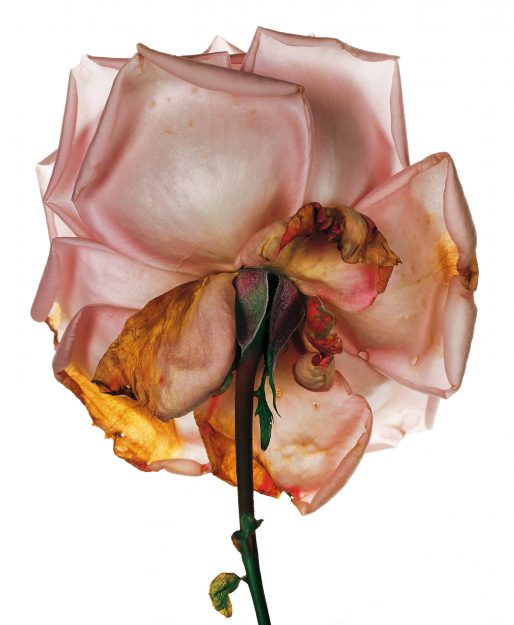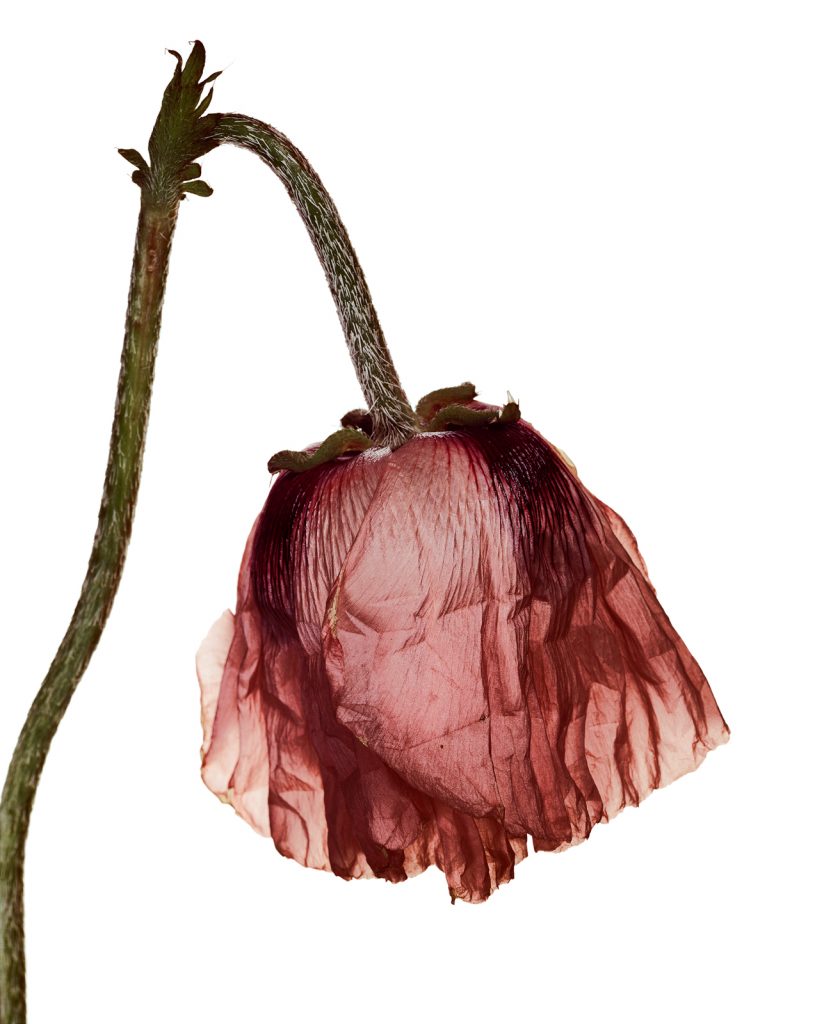I once fell in love with a person who interrupted our stroll in the middle of a crowded street, took my face in his hands, and told me that he never wanted to spend any time apart from me. We’d been a couple for nearly half a year and had decided to take a day trip to New Haven (where I’d gone to school) to explore the city’s art museums and my old haunts. We walked down Chapel Street on a bright spring day and ducked into a bookstore where we kissed in the nonfiction section and bought cards to write to each other. We caffeinated at a coffee shop where I used to study, and I took him to each dorm where I’d lived. We gazed up at the windows and he kissed my forehead, telling me he wished he’d known me then.
But even during our first week together, amid the fever pitch of our early relationship, a sentence arose, unbidden, in my mind: All things contain the seed of their own destruction. I was startled. The voice was kind, not dire; the words felt more like wisdom than a warning. I paid attention but ultimately dismissed them.
I had heard this lesson, expressed myriad ways, ever since I was a child. My parents, both devout Hindus, taught my brother and me that change is life’s only constant: the sky would always darken after a sunset, green leaves would always burn crimson in the autumn, and our bodies would grow feeble as the years passed. My father still reminds me that suffering ensues when we expect things to be permanent though they are not.
As a palliative care doctor, I encounter the most marked manifestation of impermanence every day: that of bodily illness and death. There is the young man with end-stage stomach cancer that had shrunk with chemotherapy only to invade his liver and lungs quite suddenly; the older woman with Parkinson’s whose tremors were manageable until one day they grew so severe that she couldn’t walk anymore; the gentleman with heart failure who gasped when he spoke, his breathlessness worsening each day. My patients often share photos of who they used to be, their bodies fuller, their smiles wide. Sometimes memory is their sharpest pain: I felt so good a few months ago when the chemotherapy was still working. Why did it stop working? I’m taking all of my medications, so why is my breathing getting worse?
Dying is a series of incremental losses: We become newly dependent on others to walk or change our clothes. Our appetites fade. Pain forces us to part ways with activities that once brought us joy. My patients and I often talk about living amid the chilling uncertainty that accompanies illness, and they tell me how they have coped with intense change in the past. Most haven’t deeply considered the philosophy of impermanence, but those who embrace it tell me about the freedom it confers. A body that grows weaker is slightly less shocking. Shifts in relationships are normalized. When receptivity to change supplants resistance, grief can feel like a gentler presence.
Yet everyday life is also a series of losses. And outside the hospital I couldn’t easily translate the philosophy I discussed with my patients into my daily life. My partner and I read each other poetry in each of our native languages and laughed when my dog gave him endless kisses. He didn’t want to disclose our relationship to an ex-girlfriend; I wondered whether I could trust him. We cooked elaborate meals for each other and sent the other home with leftovers. We talked seriously about how we’d combine our families’ traditions on our wedding day and discussed when we might have a child. When we fought about our differing communication styles, I grew distant and unable to express my concern for fear of seeming needy.
What made the relationship real was also what made it unbearable: the constant presence of change.
While I could accept the idea of impermanence when helping my patients contend with dying and suffering, I couldn’t do the same when living my life.
Much of what I do as a doctor and a writer depends on observation: How do people behave when everything is on the line? What do they do when they think that nobody is looking? Who do they try to be, and why? Both practices demand control, the opposite of surrender. I’d told myself a story about my partner and our relationship, clinging unintentionally to a static image of each. Yet I’d forgotten that every story is ultimately about change. And while I could accept the idea of impermanence when helping my patients contend with dying and suffering, I couldn’t do the same when living my life.
A few months later I flew to New York to attend a friend’s wedding. I sent my partner photos of the newlyweds and the cake; he sent back pictures of himself cuddling my dog. The day I returned, his texts were distant. When he stopped by that night, he gave me a brief hug and spoke to me in a detached voice, as though I were a stranger.
“I don’t think we should be together anymore,” he said.
I couldn’t find my words. I could barely feel the couch beneath me. I made sure that I was awake, that this was actually happening, that the person who couldn’t meet my eyes was the same person whose voicemail yesterday had said he couldn’t wait to see me. Shock rendered me silent: I couldn’t think to ask what went wrong, or whether he thought our relationship was worth at least a conversation about what happened. And though we agreed to take some time to consider the best path forward, he texted me a few days later, his tone formal, professional. Though he respected and cared for me, ending our relationship was the rational and logical thing to do, he said. I didn’t know what to say. I never wrote him back.
We don’t know when the diagnosis will come. We don’t know when the disease will worsen. We don’t know when love will arrive. We don’t know when it will fade. We can only know that the unexpected will happen, that certainty is a falsity, and that things will be impermanent regardless of how tightly we clench our fists around them. We mourn the brief lives of solitary moments, hoping that running reels through our minds might resuscitate them. And no matter how often my own life has shown me this truth, I relearn it in new ways each time loss arrives.
The loss of a relationship is not the same as the loss of a life. Suffering a sudden betrayal is not the same as dying from heart failure. Yet both can teach us how to cultivate a new relationship to surrender and acceptance. This doesn’t require forgetting or denying the past. It requires only that we examine it like a series of photographic stills, impressions we can retain and learn from with compassion instead of judgment.

In the days after our conversation, I lost my appetite and lay awake at night alternately crying and devoid of emotion. As I drove to work each morning, I tried to corral my emotions by remembering what I knew intellectually but couldn’t yet feel: Surrender is the path to salvation. Experiencing equanimity requires welcoming change. Embracing the ubiquity of transformation can offer transcendence. Yet I still searched for the reasons why the relationship had ended so abruptly, though this effort was nothing more than submission to an undertow: I found myself floundering in the depths, the search for an anchor perpetually elusive.
Not long thereafter, I sat with an elderly woman who hadn’t seen a doctor for fifty years. She felt her back snap one afternoon while gardening. Lung cancer had spread to her spine. She was too frail for chemotherapy. “I was fine until I suddenly wasn’t,” she said, looking out of the window at the gray sky that blanketed the city. I thought of Joan Didion’s famous lines: “Life changes in the instant. The ordinary instant.”
As I left her room, I realized that in between the moment he’d left me a longing voicemail and the moment he knocked on my door, the only certainty was change. The way I’d felt in our first month together could never last, because it was the way we felt together in that first month. The second month existed only because the first had passed. And as time marched on, so did every sweet and hard moment of our relationship. The times when we saw in each other an unvarnished goodness coexisted with the times when the pain between us made it hard to look at one another.
All things contain the seed of their own destruction—including the confusion and shock I initially felt. For even finitude offers gifts: though we will lose the things we can’t release, we will also lose the things we can’t wait to let go of. As I loosened my grip on the relationship I’d lost, as accepting its mystery became more important than understanding its demise, I began to feel how surrender begets both freedom and forgiveness.
He would always be the person who bought me a beautiful card he’d never write, the one who said he’d never told anyone besides me about his depression, the one who accused me of holding him at a distance when I didn’t share my every feeling, the one whose mother had never met any of his other girlfriends, the one who gave me books I still reread, the one I’d see around afterward, both of us knowing I’d chosen to say nothing about something that had once meant everything.
In the months that followed, when I thought of him, new lines came to mind, these from Mary Oliver:
Someone I loved once gave me a box full of darkness.
It took me years to understand that this, too, was a gift.
Thank you for subscribing to Tricycle! As a nonprofit, we depend on readers like you to keep Buddhist teachings and practices widely available.
